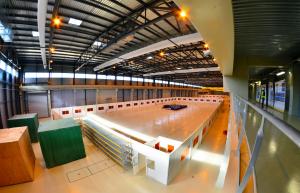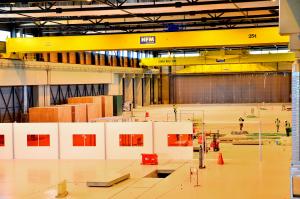The European agency has divided the manufacturing process for poloidal field coils 2-5 into a number of work packages to cover overall engineering integration, tooling equipment, site and infrastructure, manufacturing and cold testing. Four of six contracts have now been signed, including those for winding tooling (SEA ALP, Italy), site and infrastructure (Dalkia-Veolia, France), and engineering integration (ASG Superconductors, Italy).
At the SEA ALP factory in Italy, the winding table and associated auxiliary equipment has been manufactured, assembled and tested, and the first batch of equipment is now on its way to the ITER site. The winding contractor will now be responsible for the installation and commissioning of the equipment in the winding facility as well as for training personnel in its use.
The first activity on the winding line will be to use "dummy" conductor made of copper (instead of the real superconducting materials) to commission the winding line; China has
delivered two batches of dummy conductor for this purpose that are currently stored in the Poloidal Field Coils Winding Facility. Following this qualification phase, the series production of double pancakes (flat, spiralled coils that are stacked in up to nine layers to form the coil winding packs) can begin.



